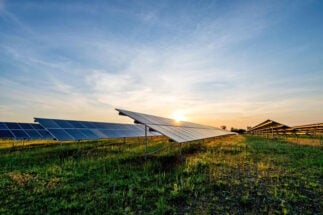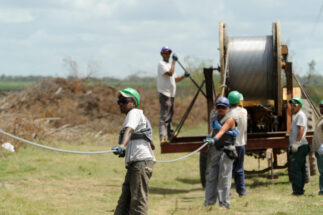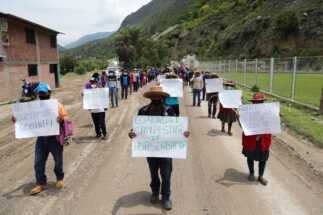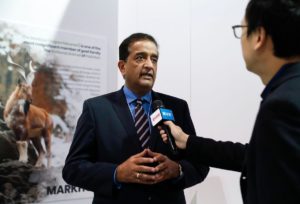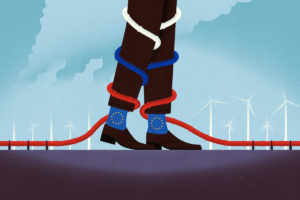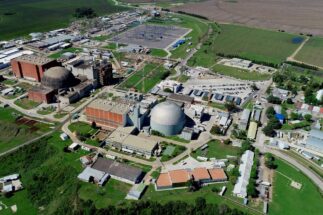For the 80 residents of Vila Limeira, turning on a fan to cool off, drinking a glass of cold water or accessing the internet at home only became possible less than a year ago, with the installation of a solar energy system in their community in the Amazon.
The riverside settlement, located on the Médio Purus reserve in the Brazilian state of Amazonas, was founded in the 1950s, but until recently received only three hours of electricity per day. It was supplied by a diesel generator, which consumed 300 litres of fuel a month, costing 2,000 reais (US$428).
In June 2021, the Vila Limeira 100% Solar project connected 35 buildings, including houses, a community centre, church and school to a small solar power plant, and made the community the first in this southern corner of Amazonas to have access to renewable energy 24 hours a day.
“We lived in a kind of isolation. And most of the communities around us still live isolated, because even to communicate, we need energy,” said Napoleão Oliveira, president of the local residents’ association.
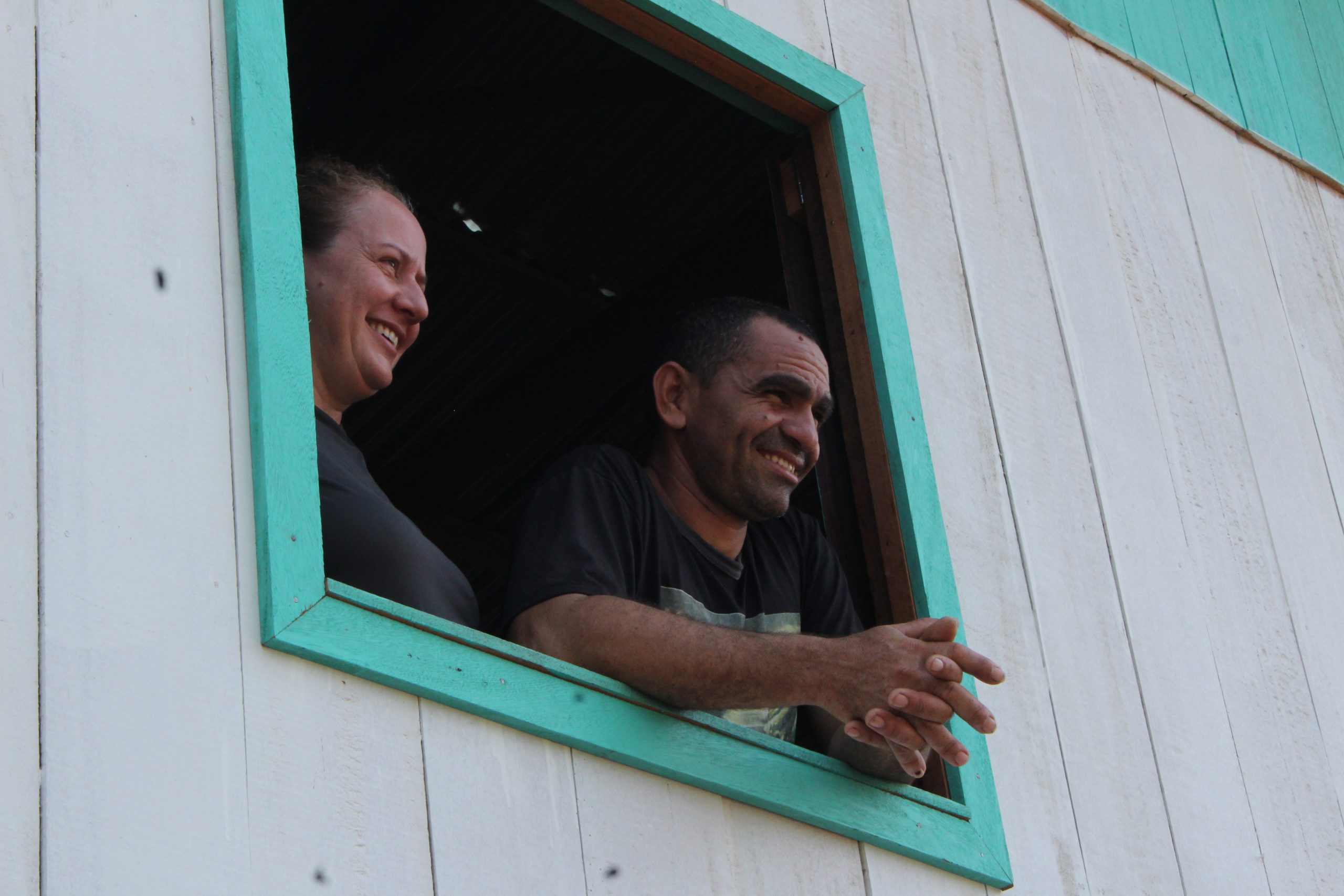
Vila Limeira is located in Lábrea, one of the 251 locations in the country that are not connected to the National Interconnected System (SIN) – the network that distributes over 95% of the country’s electricity – and therefore require independent power generation. With the exception of Fernando de Noronha, in Pernambuco, all of these locations are in the Legal Amazon, the region that comprises nine states in the Amazon basin.
The energy from the various large hydroelectric plants built on Amazonian rivers in the past decade has not been used to supply the region, but instead distributed throughout the country. Extensive areas in the states of Amazonas, Pará, Acre, Rondônia and Roraima lack the infrastructure to be connected to the national system. In these places, over 90% of the energy generated comes from diesel. “This energy is more expensive and polluting,” says Alessandra Mathyas, conservation analyst at WWF Brazil, the organisation responsible for the project in Vila Limeira.
99%
of the 1 million people in Brazil that have no electricity access live in the legal Amazon
Around 1 million people in Brazil live without any access to electricity, and 990,000 are in the Legal Amazon, according to estimates by the Institute of Energy and the Environment (IEMA), a Brazilian non-profit. The Luz para Todos (Light for All) programme, launched in 2003, has managed to bring electricity to 14 million people nationwide, but remote communities in this region have remained, according to IEMA.
This is why the most recent phase is now focused on the Amazon. The federal government has hired a regional concessionaire to install solar panels in remote areas around the capital of Amazonas, Manaus, and six municipalities along the Purus River, such as Lábrea, where the region’s new frontier of deforestation is advancing.
The potential for solar energy generation in the Amazon is increasingly clear, although the expansion of its infrastructure is taking slow steps. “The policy is good. The implementation is something else. The numbers are still almost insignificant,” said Ciro Campos, a consultant at the Instituto Socioambiental (ISA), a Brazilian rights organisation. “The programme is not taking off as it should.”
Solar a sustainable alternative for Amazon
Mathyas explains that “the best and cheapest” option would be to invest in distributed solar energy generation in the Amazon. Distributed energy is that produced by the consumers themselves. This not only helps avoid greenhouse gas emissions, but also reduces the risks of deforestation, as the energy is generated close to the point of consumption and requires infrastructure with lower impacts. A complement to solar energy, especially for remote communities, Mathyas suggests, would be biomass energy generated from waste and leftovers such as acai seeds.
In the government’s Ten Year Expansion Plan for Energy, launched in the beginning of April, a 363% growth in distributed generation is predicted by 2031. In March, the country surpassed the mark of 10 gigawatts (GW) of installed distributed power – ten times more than just three years ago and 99% of which is solar energy. Of that figure, however, only 634,000 kilowatts, or 6%, are in the country’s North Region, which comprises most of the states in the Legal Amazon, according to official data.
Investing in reducing the electricity bill has become a good investment. This is fundamental for the democratisation of solar energy
This recent boom in the sector in Brazil may be related to the approval of the legal framework for distributed generation. The final text still needs to be considered by congress, but the forecast is that subsidies for these types of projects will eventually suffer cuts, starting in 2023.
“This is also causing a race. It is the year of the ‘final judgement’ [for solar microgeneration],” said Alexandre Henklain, coordinator of the Renewable Energy Forum of Roraima.
On the other hand, the approval of the legal framework has brought more legal security to the sector, according to Ricardo Baitelo, IEMA’s project manager. This, combined with new lines of financing, tax incentives and the deep drought that made Brazil’s electricity generation more expensive, until recently, help explain the current moment for distributed solar generation.
“Investing in reducing the electricity bill has become a good investment. This is fundamental for the democratisation of solar energy,” Baitelo said.
One of the main tax incentives is aimed at the foreign market, since Brazil currently depends on imports for solar equipment, mainly from China. As of May, the import tax on solar panels will be cut in half – an incentive that should stimulate an already heated market. Between 2012 and 2021, the value of imports of solar panels jumped from US$5.5 million to US$2.3 billion, almost all in purchases from China. Although at a much lower volume, the same trend occurred in the Legal Amazon, whose imports went from US$31,000 to US$13 million.
Solar energy of social importance
Among the new financing lines is a credit offer from BNDES, the national development bank, for consumers in the North Region to install solar panels. The Amazônia Social pilot programme hopes to finance 1,600 installations over the next few years.
The funding could boost projects in remote areas that are already spreading across the region. CEAPS, a socio-environmental NGO, has brought solar energy to over 100 homes, as well as schools, and community and health centres in the Tapajós reserve, in western Pará state. Elsewhere, ISA installed photovoltaic systems in 80 villages on the Xingu Indigenous Territory, Mato Grosso state.
The Foundation Amazônia Sustentável (FAS) coordinates the installation of photovoltaic systems in riverside communities in Amazonas state, which contribute to promoting tourism and fishing, and help supply electricity to small vegetable oil processing plants.
The most recent system was installed ten months ago in the community of Santa Helena do Inglês, in the Rio Negro reserve, near Manaus. There, solar energy ensures the lighting of streets, the community centre, a church and football pitch, as well as the houses of its 96 residents.
“The goal is to reduce the use of fossil fuels from diesel generators [in the community] by 50%,” explains Gabriela Sampaio, who coordinates the program for FAS.
Today, although solar energy initiatives in remote Amazon areas are not representative of national statistics, they have an importance that cannot be overlooked, argues André Frazão Teixeira, a PhD student in energy systems planning from the State University of Campinas (Unicamp), São Paulo.
“From a social point of view, these projects are very important,” Teixeira says, as they “combine economic development with sustainable development”.
Solar plants gain in Amazonas
Centralised energy generation, connected to the national system, has also advanced with the construction of a number of new solar plants in Brazil. From 2017 to February this year, the installed power almost quintupled to 4.7 GW, according to Absolar, the national solar sector association. This rapid advance, however, did not occur in the states of the Legal Amazon.
Amazonas is the state with the most significant lack of energy infrastructure: almost 40% of nationwide locations without connection to the national grid are in the state. But the recent approval of tax incentives, as well as the launch of the largest solar energy project in the state, may begin to change this reality.
We have an energy security problem, a political problem and also an economic problem for the advance of photovoltaic solar energy in the Amazon
The Amazonas Renewable Energy Cooperative (CooperSol) has inaugurated two of the three solar plants proposed for the capital, Manaus. The first began operating in 2021 and generates energy for 92 households, while the second, launched in February, has benefited 50 people.
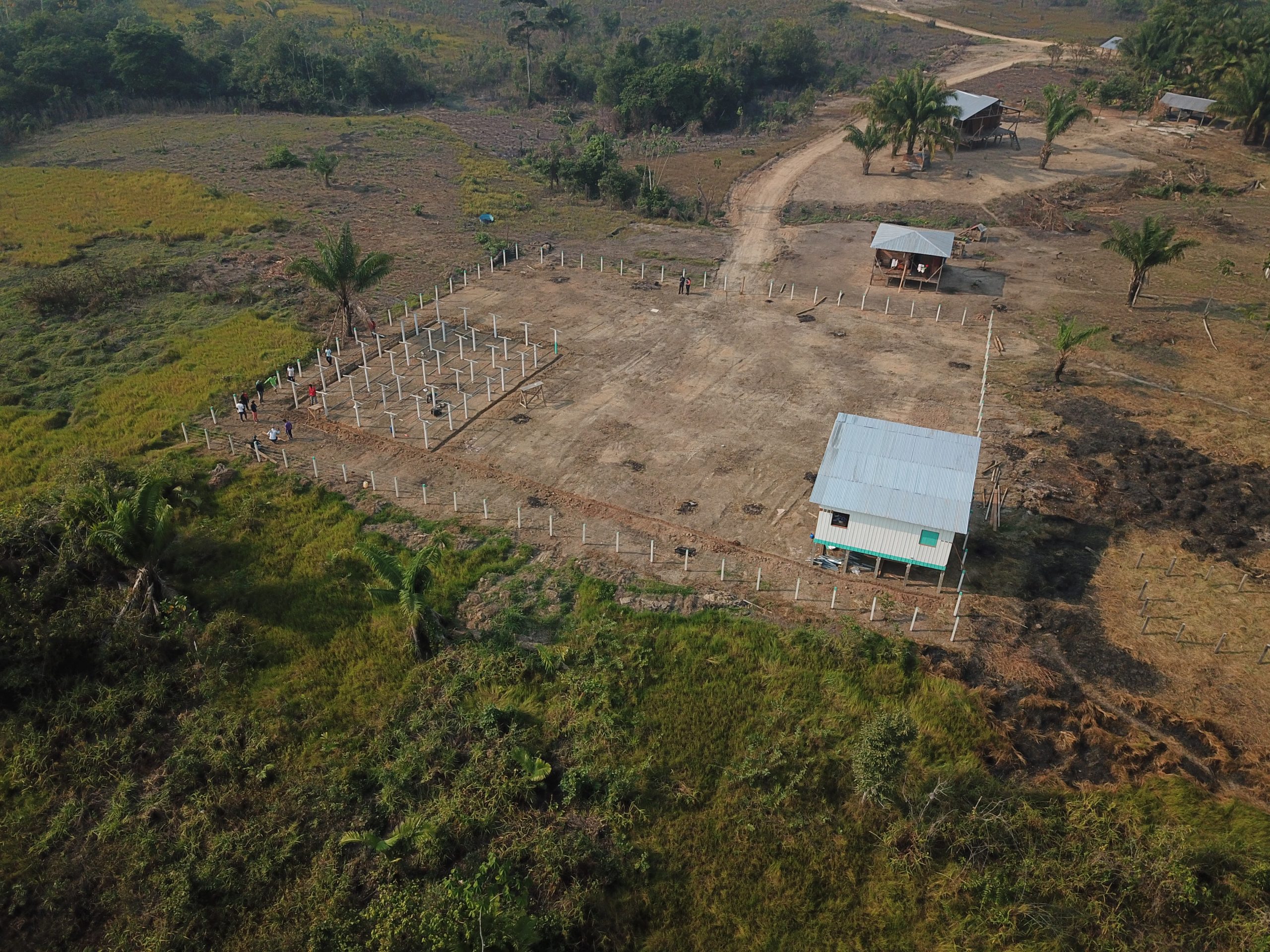
“Our focus is people who live in flats, who wanted to join solar energy but had no alternative,” said engineer Jamil Chaar, a Coopersol partner and director of Expertise Energia, an associate of the cooperative and builder of the plants.
According to Chaar, the plants are financed by the members themselves, as is the installation of the solar panels. Then, the energy generated is sent to the regional concessionary network, which converts the production into credits and transfers them to the members. They can reduce their electricity bills by up to 75% and recover their investments in up to five years, according to Chaar. His expectation is that the demand from associates will increase by 200% this year.
“For the third plant [currently under construction], we are targeting business owners who consume 5,000 to 8,000 reais of energy (US$1,070–1,710) and have no way of producing,” he explained.
Solar’s challenges in the Amazon
Even if the solar energy systems are more democratic and flexible for communities such as those in the Amazon, they face great obstacles, according to Davi Gabriel Lopes, a researcher in photovoltaics at Unicamp. He cites the difficulty of maintaining the equipment, the high cost of storing the energy and the fossil fuel lobby – which is made clear in the national auctions that prioritise thermoelectric plants over renewable sources.
“We have an energy security problem, a political problem and also an economic problem for the advance of photovoltaic solar energy in the Amazon,” says Lopes.
Campos, from ISA, believes that the role of hydroelectric and thermoelectric plants is still relevant for the country – and for the Amazon. After all, today, solar energy accounts for only 2.5% of the country’s electricity matrix. “They would be a guarantee of supply and reserves of energy, something that solar and wind energy still don’t have, due to high storage costs. If there is no sun or wind, there is no energy production,” explains Campos.
But he agrees that the redirection of public incentives should occur as soon as possible. Currently, the coal lobby continues to attract political support to keep thermoelectric plants running. “Fossil energies should only enter auctions when there is no renewable alternative,” says Campos. “The space for fossil fuels has to be limited and needs to start being discontinued by the end of this decade. Time is running out.”


